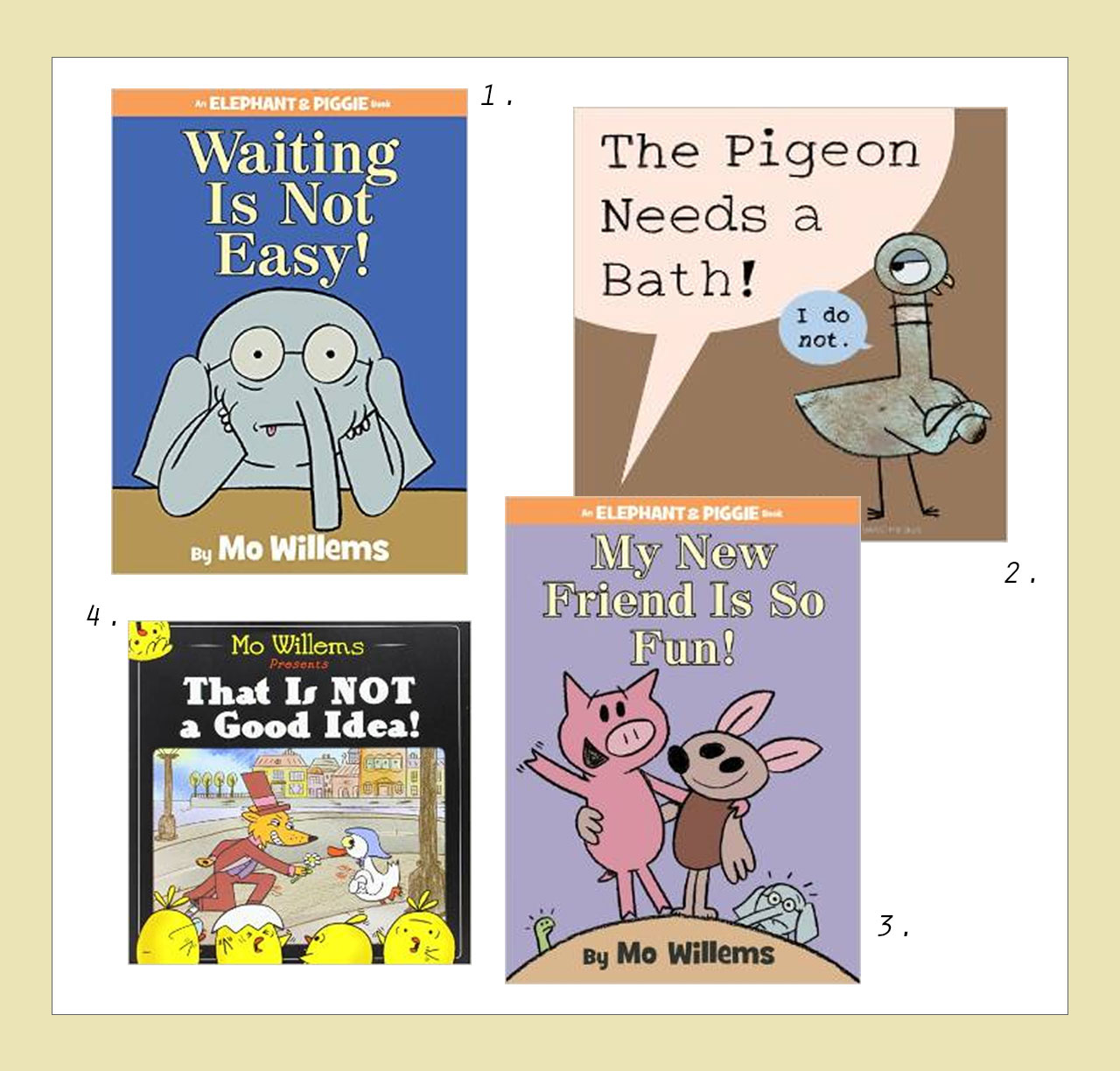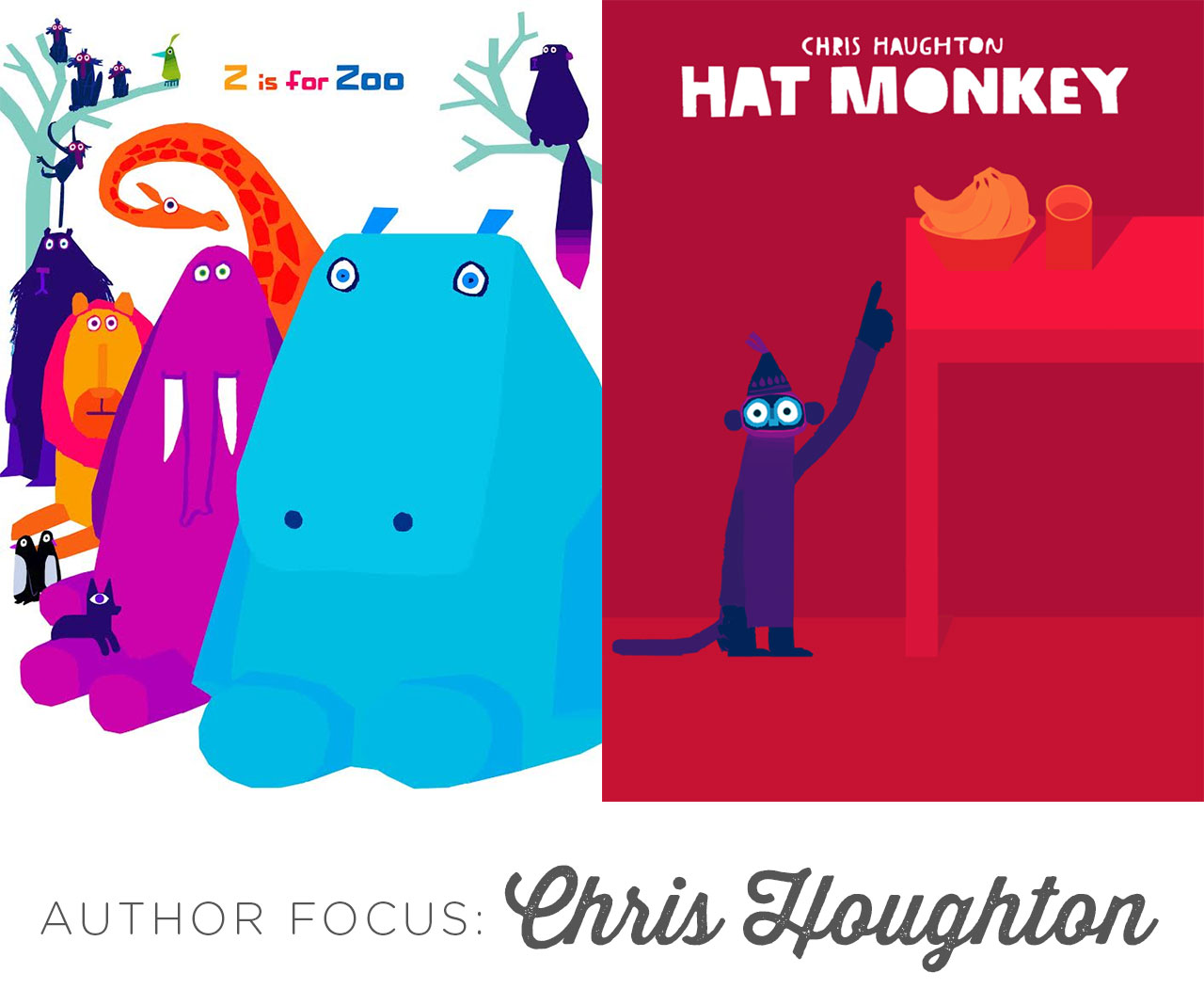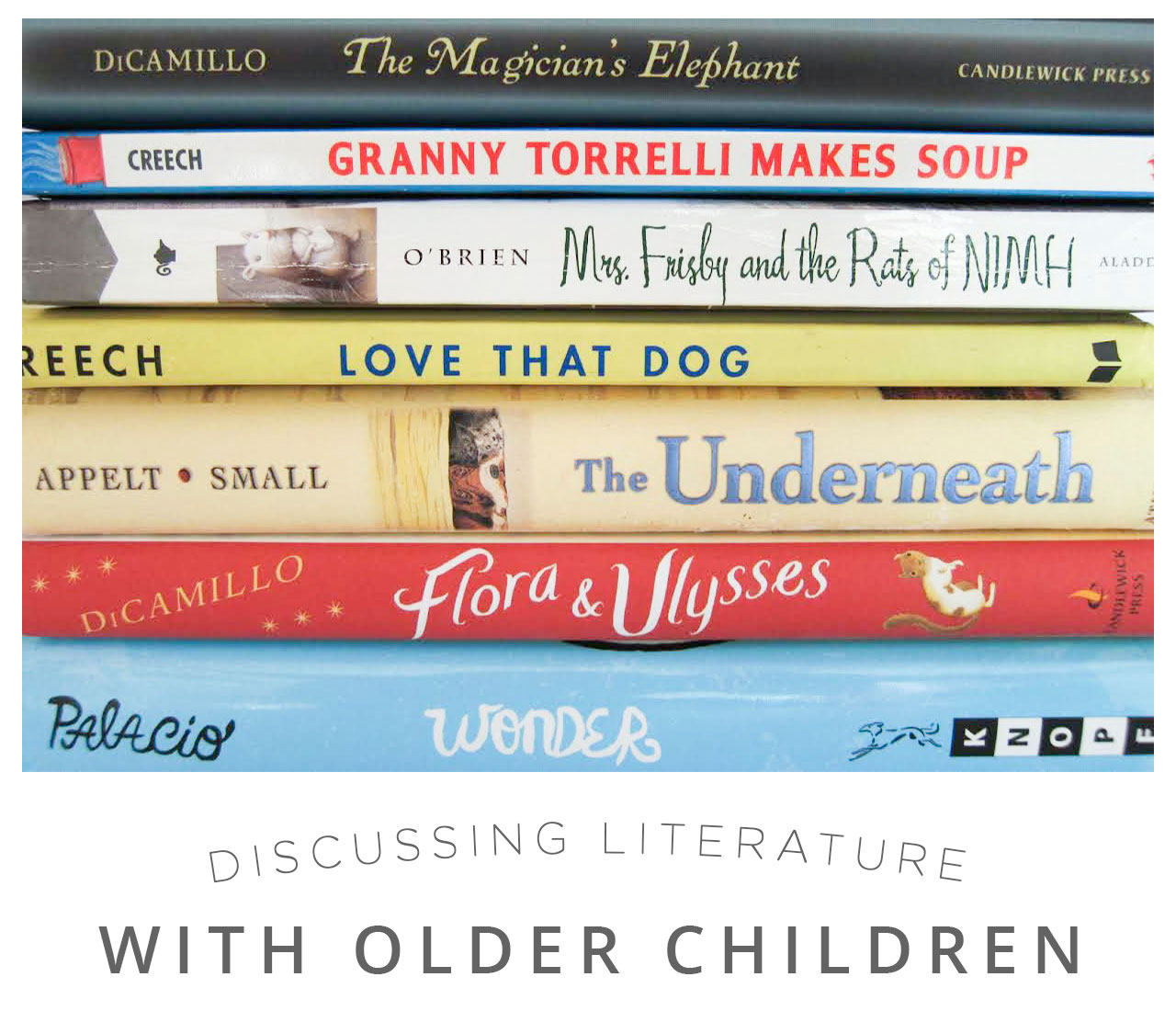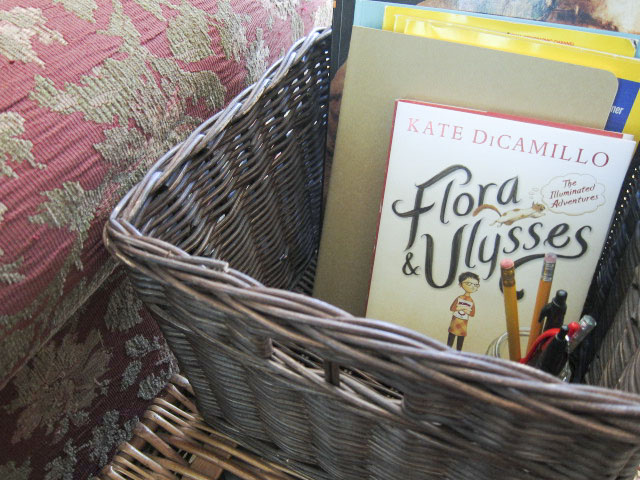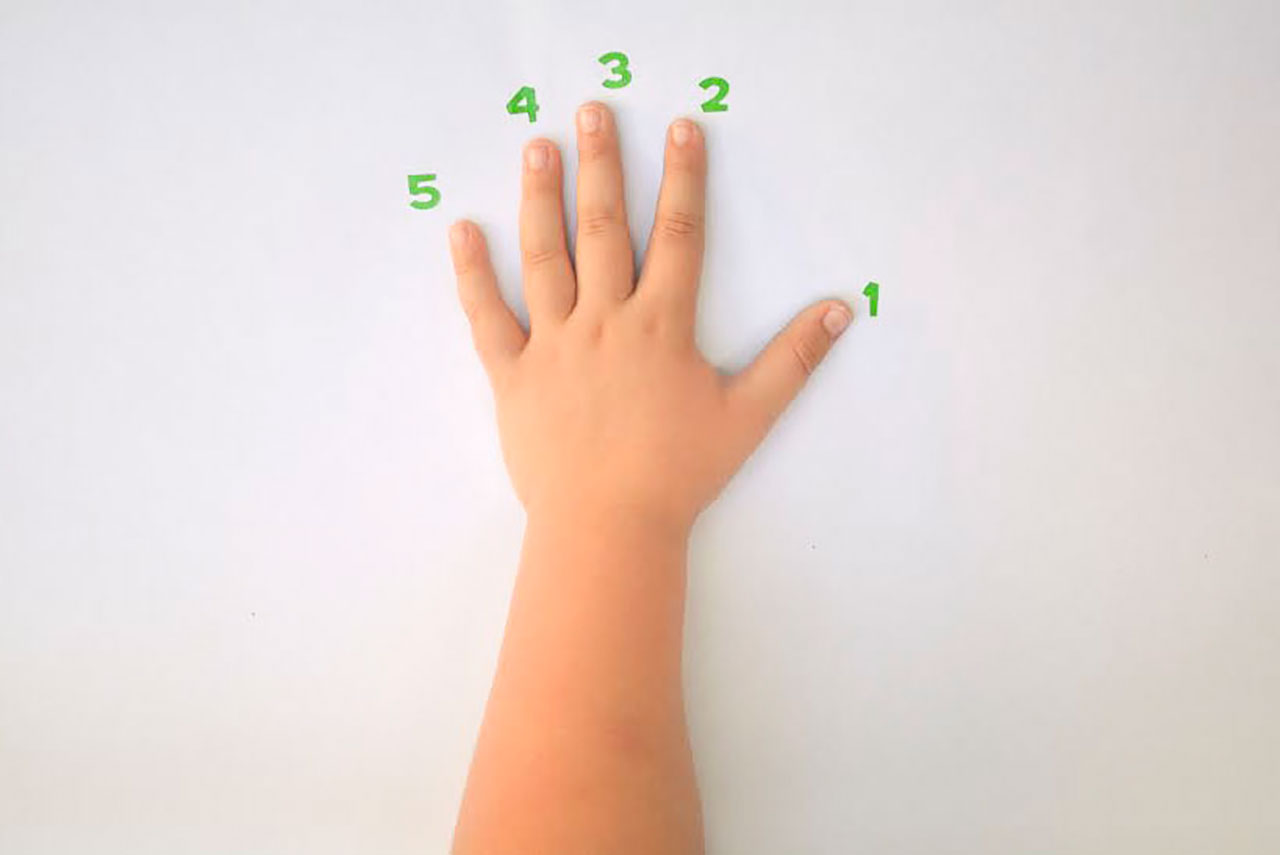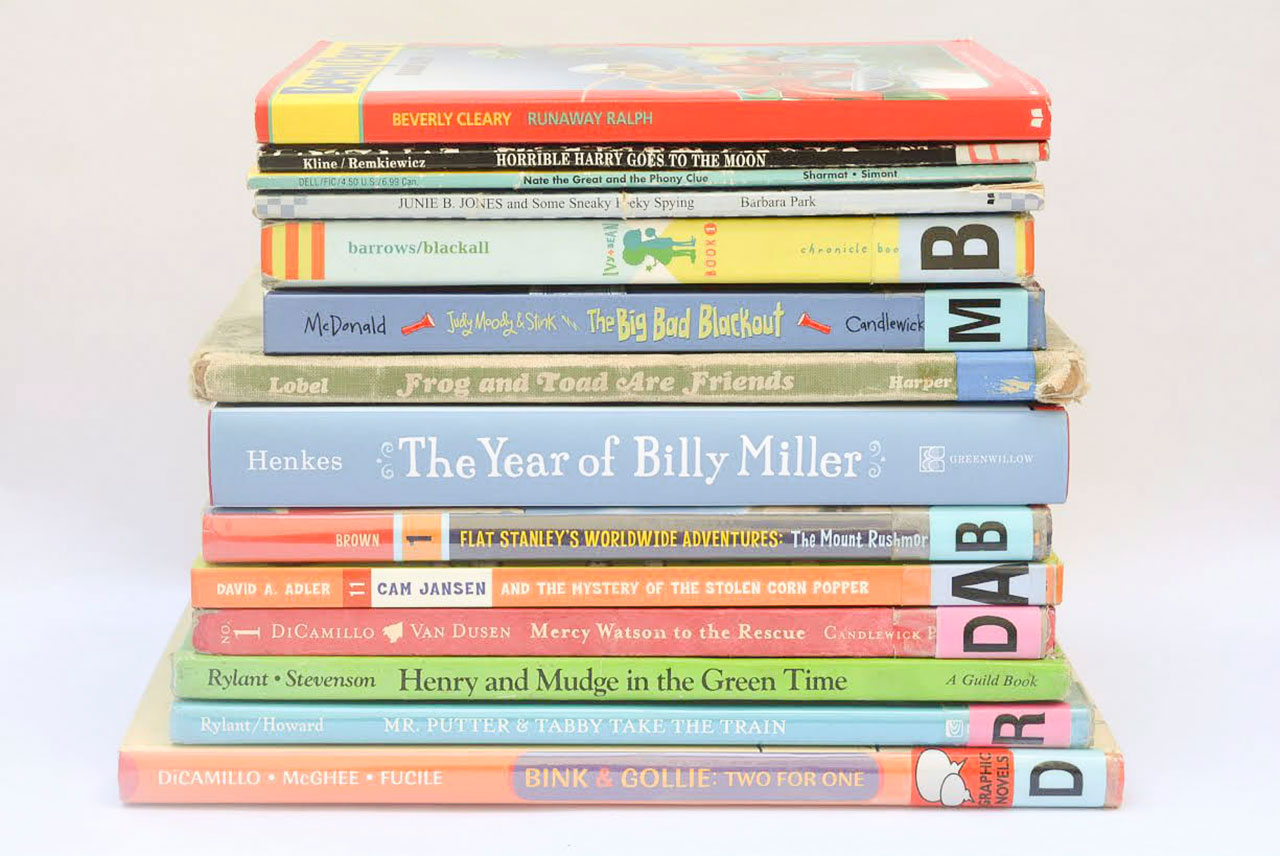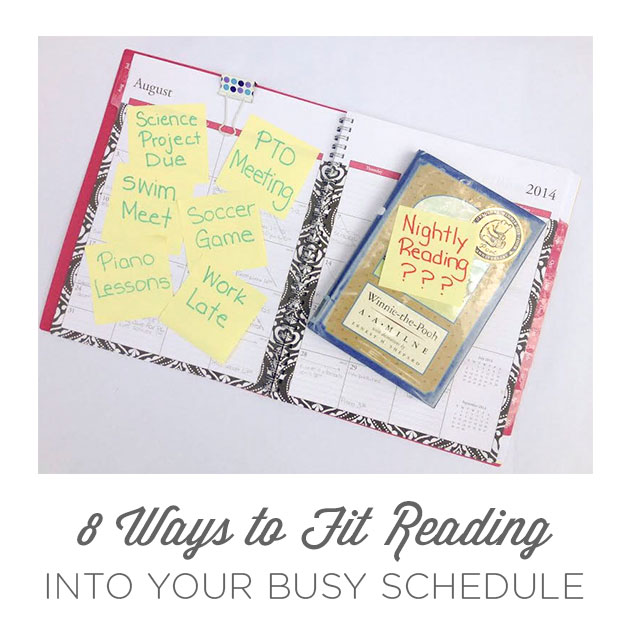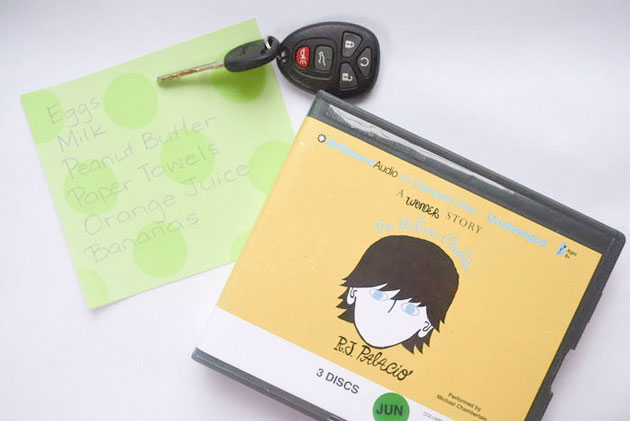Author Focus: Mo Willems
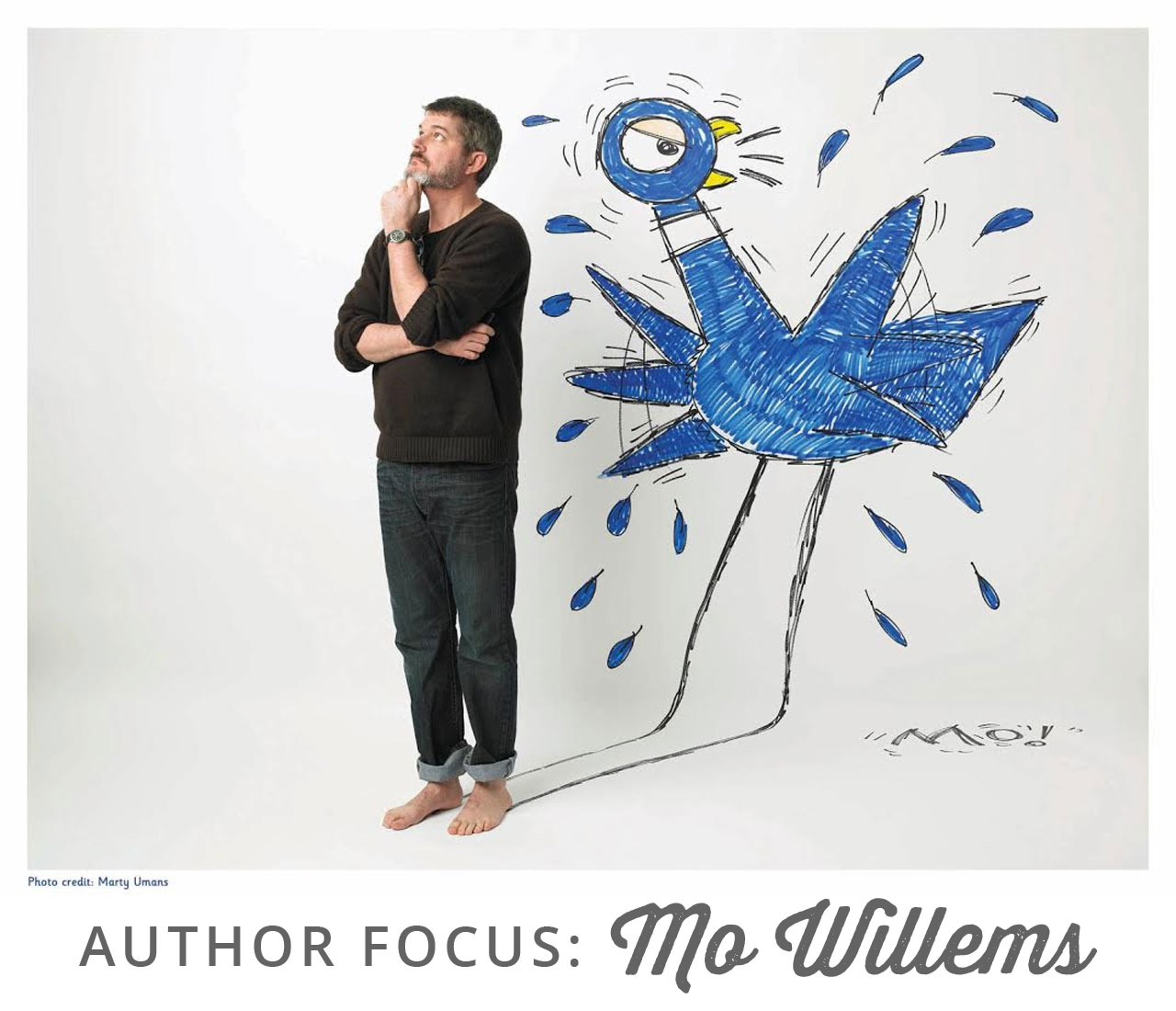 My daughters, aged 4 and 6, love Mo Willems. My second and third graders at school love Mo Willems. I think everyone under the age of 10 loves Mo Willems. Ok, let’s be honest – parents of kids under the age of 10 love Mo Willems.
My daughters, aged 4 and 6, love Mo Willems. My second and third graders at school love Mo Willems. I think everyone under the age of 10 loves Mo Willems. Ok, let’s be honest – parents of kids under the age of 10 love Mo Willems.
What’s not to love? He’s written over 40 books since 2004. You don’t need to be a mathematician to figure out how many books, on average, Mo publishes per year. He truly understands children (he left a career in television animation to be a stay-at-home dad). He is ridiculously talented (he won 6 Emmys for his writing on Sesame Street, and his picture books have won 3 Caldecott Honors, 2 Geisel Medals, 4 Geisel Honors, and 2 Carnegie Medals). He has simple goals (the bio on his blog, the short version, says Mo Willems makes funny drawings that hopefully will make you laugh). He creates characters that are easy for children to copy (as a kid he used to draw Snoopy and Charlie Brown, so he actually wants his readers to imitate his work and gets joy when we “infringe on his copyrights”).
Last year, my second and third graders studied Mo Willems as part of a beginning of the year author study. I’m embarrassed to say this, but I actually thought twice about choosing Mr. Willems as our intended subject. After all, most of my students had undoubtedly read all of the Elephant and Piggie books, and the Pigeon series, in kindergarten (and probably even in preschool). I wondered if Mo’s work would be too young, too simple, or not have enough substance for my higher achieving readers. Boy was I wrong. My students devoured every single book I read. They pleaded me to share old favorites. Every time a new book by Mo was published that year, they begged me to get it for the classroom (and of course I gladly obliged). Students brought in their own copies of his books and checked them out at the library. They read and re-read. They analyzed the text (his use of speech bubbles, font size, shape, and color), the characters (their body language, facial expressions, and emotions) and the unique way Mo shows movement and action in his illustrations. They spent days just observing the way Mo draws Gerald and Piggie’s facial features (it’s amazing how we can understand what his characters are feeling and thinking just by looking at the way Mo has drawn their eyes or added an extra line in a furrowed brow). And of course, my students doodled their hearts out and practiced drawing every single one of his characters.
I think what I love most about Mo Willems is that his books speak to children not at them. I think this is why his books appeal to such a broad range of ages (from toddlers to 10 year olds to adults). He thinks about his audience but not for his audience. Mo’s books explore themes (like friendship, perseverance, empathy, compassion, jealousy, acceptance, and yes, even patience), which allow even the youngest reader to think deeply and ask questions about the world around them. Mo openly admits to not having all of the answers to these questions. I don’t know about you, but as a parent and educator I find that confession quite refreshing!
Above are a few of my favorite Mo Willems’ books including his latest, and much anticipated, Waiting is Not Easy! (which by the way I’ve been patiently waiting for since I pre-ordered it several months ago – and it was not easy – case in point). Have fun browsing these titles and be sure to do a little doodling of your own!
- Waiting is Not Easy! (NEW – November 4, 2014)
- We Are in a Book!
- My New Friend Is So Fun!
- I Will Surprise My Friend!
- I Am Invited to a Party!
- I’m a Frog!
- Don’t Let the Pigeon Drive the Bus!
- The Pigeon Wants a Puppy!
- The Pigeon Needs a Bath!
Others:
And be sure to check out these links:
http://www.mowillems.com – The official Mo Willems website
http://www.pigeonpresents.com/activities/pigeon_draw01.pdf – How to draw The Pigeon! By Mo Willems
Note: As I was sitting here finishing up this post, my 6 year old curiously eyes my stack of Mo Willems’ books sitting next to the computer. She immediately asks, “Are you using these? I want to use this one (We Are in a Book!) to help me write my own book.” Isn’t that fitting? So I created a simple draft of this printable for her, and with a little bit of magic from Randi– voila! My daughter and I hope you enjoy it. Click on the photos below to download printables…
